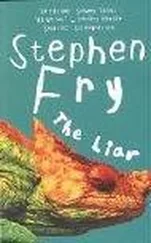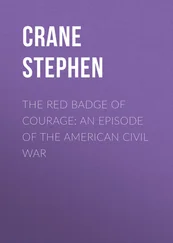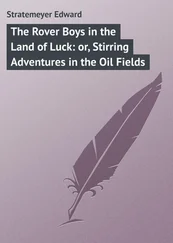Stephen Fry - The Ode Less Travelled - Unlocking The Poet Within
Здесь есть возможность читать онлайн «Stephen Fry - The Ode Less Travelled - Unlocking The Poet Within» весь текст электронной книги совершенно бесплатно (целиком полную версию без сокращений). В некоторых случаях можно слушать аудио, скачать через торрент в формате fb2 и присутствует краткое содержание. Жанр: Старинная литература, на английском языке. Описание произведения, (предисловие) а так же отзывы посетителей доступны на портале библиотеки ЛибКат.
- Название:The Ode Less Travelled: Unlocking The Poet Within
- Автор:
- Жанр:
- Год:неизвестен
- ISBN:нет данных
- Рейтинг книги:3 / 5. Голосов: 1
-
Избранное:Добавить в избранное
- Отзывы:
-
Ваша оценка:
- 60
- 1
- 2
- 3
- 4
- 5
The Ode Less Travelled: Unlocking The Poet Within: краткое содержание, описание и аннотация
Предлагаем к чтению аннотацию, описание, краткое содержание или предисловие (зависит от того, что написал сам автор книги «The Ode Less Travelled: Unlocking The Poet Within»). Если вы не нашли необходимую информацию о книге — напишите в комментариях, мы постараемся отыскать её.
The Ode Less Travelled: Unlocking The Poet Within — читать онлайн бесплатно полную книгу (весь текст) целиком
Ниже представлен текст книги, разбитый по страницам. Система сохранения места последней прочитанной страницы, позволяет с удобством читать онлайн бесплатно книгу «The Ode Less Travelled: Unlocking The Poet Within», без необходимости каждый раз заново искать на чём Вы остановились. Поставьте закладку, и сможете в любой момент перейти на страницу, на которой закончили чтение.
Интервал:
Закладка:
The upshot of Imagism, Vorticism, Cubism, Neo-Plasticism, Constructivism, Acmeism, Futurism, Dadaism and all the other -isms that flooded art in the twentieth century was to allow a new kind of poetry, of which concrete poetry is one, the work of cummings another. Such practices now inform the works of thousands of poets around the globe. Since, unlike traditional metrical poetry, they descend from conscious ideas rather than techniques evolved (by way of music and dance) out of the collective unconscious of three millennia, their genesis did seem worth a small excursion.
The point that seems to me most relevant is the notion of quiddity or whatness. I mentioned this when we were looking at Gerard Manley Hopkins, who had been deeply influenced by the medieval theologian Duns Scotus and his concept of haecceity , or thisness . Novels can develop stories and character and much else besides, but poetry uniquely gives itself the opportunity to enter the absolute truth of a phenomenon (whether it be a feeling, an object, a person, a process, an idea or a moment) through language itself. How many times will you, as poet, look at a fly, watch a tap dripping, examine an inner feeling, listen to the wind and grow immensely frustrated at the inability of language exactly to capture it, to become it? All the stock phrases and clichés enter your frantic mind, all the footling onomatopoeia, rhymes and rhythmic patterns that we have heard before and none of them will do. Painters, too, look from their subject to the tip of their paintbrush and their palette of paints and despair.That’s not it at all, that’s not what I meant at all.
So poor J. Alfred Prufrock whines, and so do we.
Aside from Pound, the works of H. D. (Hilda) Doolittle are perhaps the purest conscious attempt to adhere to the imagist project: here is her ‘Sea Poppies’:your stalk has caught rootamong wet pebblesand drift flung by the seaand grated shellsand split conch-shells.Beautiful, wide-spread,fire upon leaf,what meadow yieldsso fragrant a leaf
It fascinates me that a medievalist like Hopkins and a modernist like Doolittle could both arrive at so similar a poetic destination from such utterly opposing points of origin. Doolittle’s technique and effect are wildly different from those of Hopkins, of course, but I am sure you can feel the same striving to enter the identity of experience.
S ILLY, S ILLY F ORMS
Enough, already. There are ludic and ludicrous forms, a world away from ideology and ideogram, which play on syllable length, shape and pattern, some of them bafflingly specific. What is the point of RICTAMETERS, one is forced to wonder? They are poems in the shape of a diamond.

In stricter versions (as if there is any reason to be strict about so childish a form. I mean ferrankly …) the diamond is structured by a syllable count of 2, 4, 6, 8, 10, 8, 6, 4, 2. A variation is the DIAMANTE where the purpose, as in some absurd weekend puzzle magazine, is to go from one object or phenomenon to an opposite or complementary one, by way of a succession of related words.
wolf
grey shaggy
slavering howling ripping
violent hunter innocent quarry
frisking grazing bleating
white woolly
lamb
The ‘rule’ is that the second line is composed of related adjectives and the third of related participles ; the first two words of the middle line are nouns or nominal phrases connected to the top of the diamond, the next pair connect to the bottom. You then repeat the process symmetrically down to your end-word. The whole thing is daffy and hardly qualifies as a form for poetry, but I include it anyway. Something to do on long train journeys.
Another bizarre form, bizarrely popular if the Internet is anything to go by, is to be found in RHOPALICS. A rhopalic line is one in which each successive word has one more syllable than its predecessor. This sentence cleverly exemplifies rhopalicism . There are variations, like increasing each word in a line letter by letter ( I am not sure about trying variant rhopalics ) and decreasing rather than increasing the count ( stultifying staggering tediously complete bloody waste, fuck off… ). Or there is this kind of thing:My feelings and emotionsIn their restless motionsSeethe and swell like oceansOf the kind a Stoic shuns,Better find some calmer ’uns
The dwindling but aurally congruent rhyme-returns yielded from emotions, motions, oceans, shuns and ’uns constitute DIMINISHING RHYME, which may seem arid and futile, but George Herbert, the deeply religious and verbally playful poet whose ‘Easter Wings’ we have seen, used them with great seriousness in his poem ‘Paradise’:I bless Thee, Lord, because I growAmong the trees, which in a rowTo Thee both fruit and order ow.
Certain other pointless forms demand a prescribed diminishing or ascending syllable count. The TETRACTYS asks the poet to produce five lines of 1, 2, 3, 4 and 10 syllables. Where’s the tetra in that, for heaven’s sake, you may be wondering. I believe it may be to do with a ‘mystic tetrad’ in Pythagoreanism and kabbalism and some arse-dribble or other connected to Tarot card layout and the four elements. 1+2+3+4=10 is the sum on which Ray Stebbing, the form’s inventor, based the poetic tetractys. No doubt he meant well by it. Tetractys, appropriately enough, is pronounced to rhyme with wet practice .
who choose
to compose
tetractyses
are welcome to them, far as I’m concerned
and I really cannot see the virtue
in flipping them:
too heavy
on top
no?
Mr Stebbing is a serious and accomplished poet, and if he believes his form to be the new native haiku then I wish him well. An even arsier form is the NONET:deathto thosewho composesuch wastes of breaththey have no gracesat least in my poor eyesthey suggest useless tracesof ancient forms more pure and wisewhen people start to count, true verse dies.
The syllabic count starts at one and increases until it reaches nine. Mine, in desperation, rhymes. Syllabics? Silly bollocks, more like.
A CROSTICS
ACROSTICS have been popular for years; nineteenth-century children produced them instead of watching television–those who were lucky enough not to be sent down chimneys or kidnapped by gangs of pickpockets did, anyway. So you want a dedication then? For you I’ll do my very best Read the letters downwards, darling, then You’ll see I’ve passed your little test.
What is going on below, you might wonder?age is areal buggerso few yearsending up whitewrinkled weak as strawincontinence comes and ipiss myself in every way–stopeternity’s too short too short a time
That is a DOUBLE ACROSTIC, both the first and last letters of each line spell out the same defiance and physical disgust. I haven’t highlighted the letters; you can trace them down yourself. In case you are wondering, I have not reached that stage yet–it is an imaginative leap, we are allowed those from time to time: all functions working smoothly last time I checked. You could in theory spell words down from the middle of a line–this is called a mesostich and is just plain silly.
The French seem to be the people most interested in acrostics and other poetic wordplay. Salomon Certon wrote a whole sonnet omitting the letter ‘e’: this is known as a LIPOGRAM. Not the same root as liposuction, as it happens, despite the apparent similarity of meaning. These days, you might feel, a poem that never uses an ‘I’ would be a real achievement…
Читать дальшеИнтервал:
Закладка:
Похожие книги на «The Ode Less Travelled: Unlocking The Poet Within»
Представляем Вашему вниманию похожие книги на «The Ode Less Travelled: Unlocking The Poet Within» списком для выбора. Мы отобрали схожую по названию и смыслу литературу в надежде предоставить читателям больше вариантов отыскать новые, интересные, ещё непрочитанные произведения.
Обсуждение, отзывы о книге «The Ode Less Travelled: Unlocking The Poet Within» и просто собственные мнения читателей. Оставьте ваши комментарии, напишите, что Вы думаете о произведении, его смысле или главных героях. Укажите что конкретно понравилось, а что нет, и почему Вы так считаете.










